Search Result
Results for "
oral absorption
" in MedChemExpress (MCE) Product Catalog:
2
Isotope-Labeled Compounds
| Cat. No. |
Product Name |
Target |
Research Areas |
Chemical Structure |
-
- HY-B0467S
-
|
Amoxycillin d4
|
Bacterial
|
Infection
|
|
Amoxicillin-d4 is a deuterium labeled Amoxicillin. Amoxicillin is an antibiotic with good oral absorption and broad spectrum antimicrobial activity[1][2].
|
-
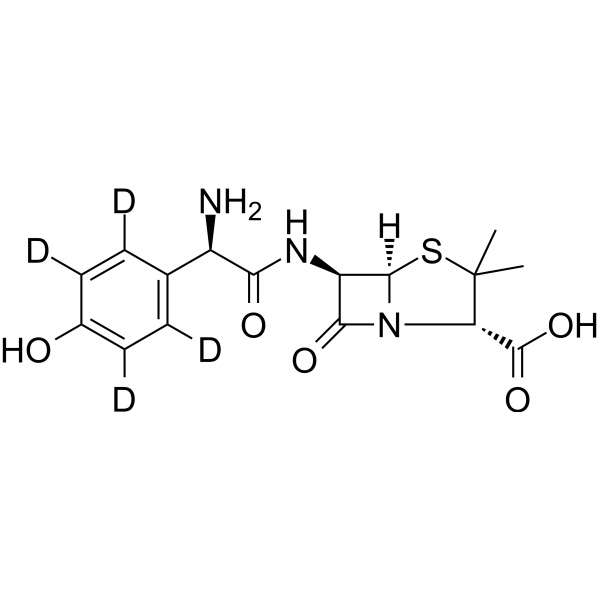
-
- HY-157049
-
|
|
Others
|
Others
|
|
Caprylocaproyl Macrogolglycerides is a lipoidic excipient/vehicle in an oral capsule formulation. Caprylocaproyl Macrogolglycerides can enhance the absorption of small molecule compounds .
|
-
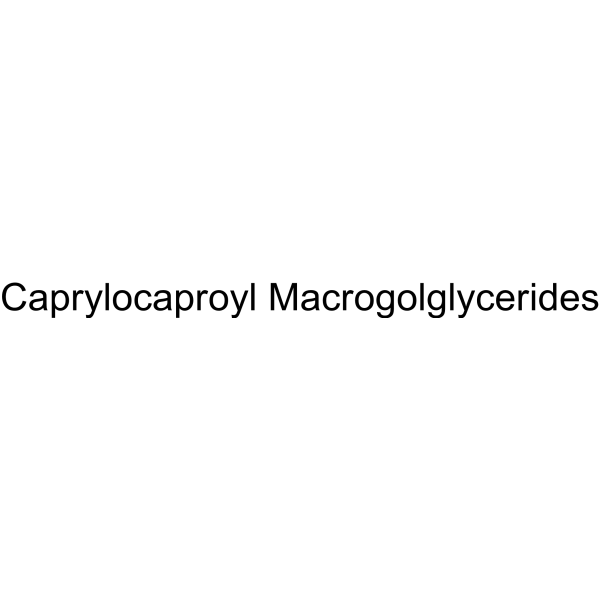
-
- HY-15991
-
|
AZD1722; RDX5791
|
Na+/H+ Exchanger (NHE)
|
Metabolic Disease
|
|
Tenapanor (AZD1722) is a potent and orally active sodium/hydrogen exchanger isoform 3 (NHE3) inhibitor. Tenapanor reduces intestinal phosphate absorption predominantly through reduction of passive paracellular phosphate flux. Tenapanor has the potential for the research of hyperphosphatemia .
|
-
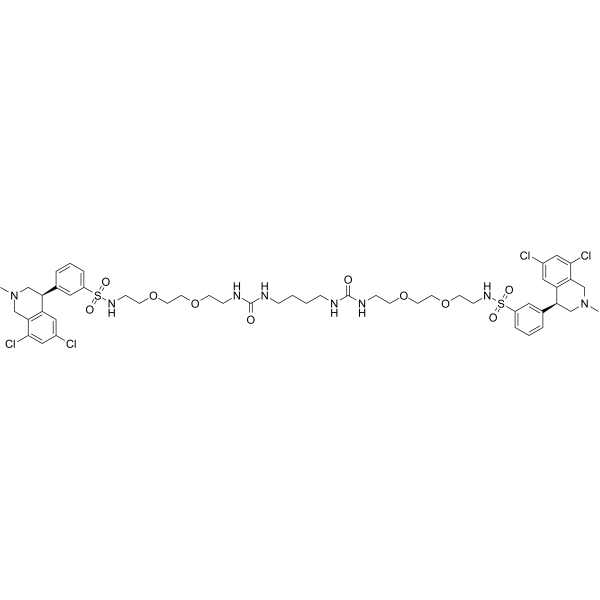
-
- HY-15991A
-
|
AZD1722 hydrochloride; RDX5791 hydrochloride
|
Na+/H+ Exchanger (NHE)
|
Metabolic Disease
|
|
Tenapanor (AZD1722) hydrochloride is a potent and orally active sodium/hydrogen exchanger isoform 3 (NHE3) inhibitor. Tenapanor hydrochloride reduces intestinal phosphate absorption predominantly through reduction of passive paracellular phosphate flux. Tenapanor hydrochloride has the potential for the research of hyperphosphatemia .
|
-
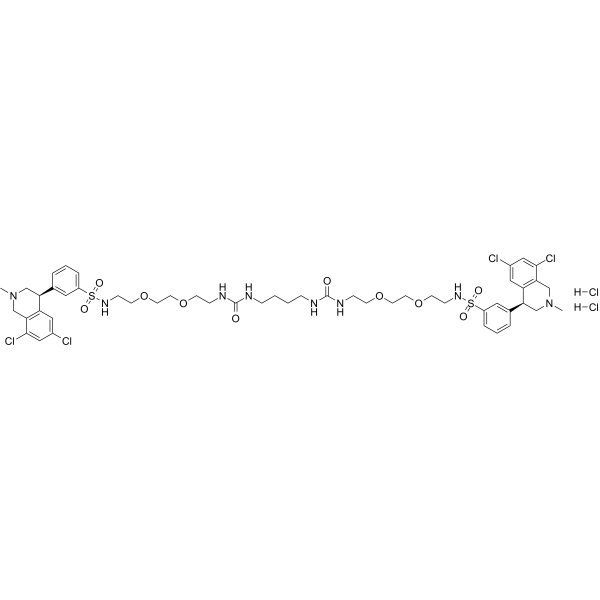
-
- HY-150752
-
|
|
Btk
Pyroptosis
|
Cancer
|
|
BTK-IN-15 (compound 42) is a potent Bruton's tyrosine kinase (BTK) inhibitor with high oral absorption. BTK-IN-15 inhibits BTK with an IC50 value of 0.7 nM. BTK-IN-15 displays excellent kinase selectivity, antitumor activity, and induces apoptosis .
|
-

-
- HY-147826
-
|
|
EGFR
Apoptosis
|
Cancer
|
|
EGFR-IN-60 (Compound 7d) shows obvious inhibition of EGFR WT, EGFR T790M, EGFR L858R and JAK3 with IC50s of 83, 26, 53, and 69 nM, respectively. EGFR-IN-60 potently inhibits the growth of H1975 cells harboring EGFR T790M mutation (IC50=1.32 µM) over A431 cells overexpressing EGFR WT (IC50=4.96 µM). EGFR-IN-60 exhibits good oral absorption, potent and safe antitumor activity. EGFR-IN-60 induces cell death through apoptosis supported by increased Bax/Bcl-2 ratio .
|
-
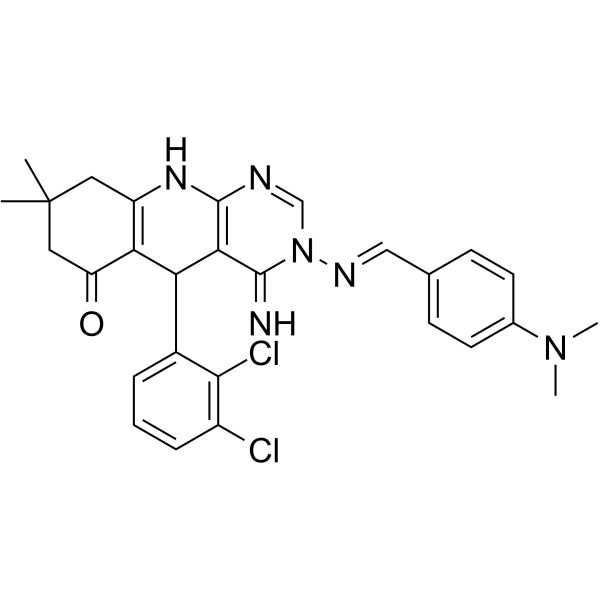
-
- HY-B0467AS
-
-

-
- HY-N0324
-
|
|
Endogenous Metabolite
|
Metabolic Disease
|
|
Cholic acid is a major primary bile acid produced in the liver and usually conjugated with glycine or taurine. It facilitates fat absorption and cholesterol excretion. Cholic acid is orally active .
|
-
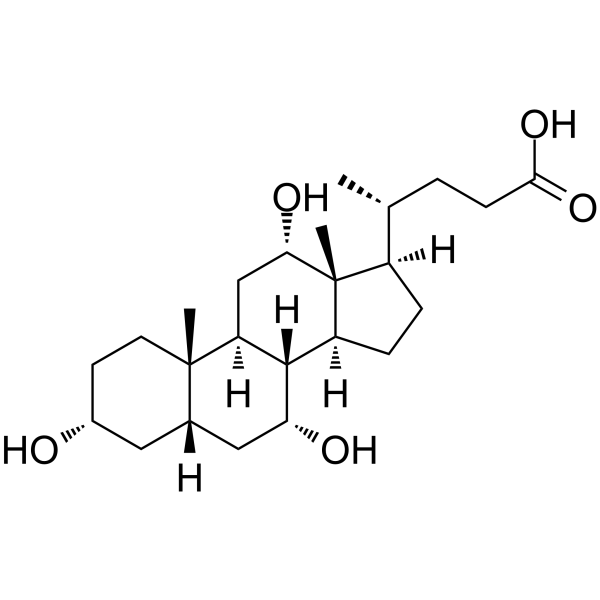
-
- HY-N0324A
-
|
Sodium cholate
|
|
|
|
Cholic acid sodium is a major primary bile acid produced in the liver and usually conjugated with glycine or taurine. It facilitates fat absorption and cholesterol excretion. Cholic acid sodium is orally active .
|
-
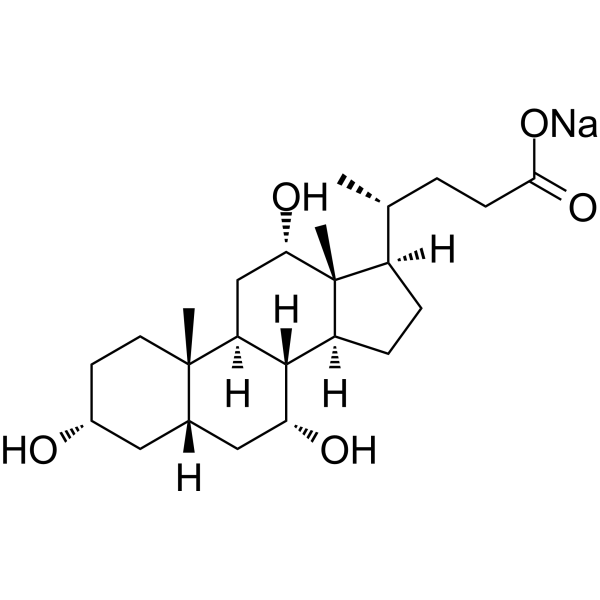
-
- HY-N0324B
-
|
|
Endogenous Metabolite
|
Metabolic Disease
|
|
Cholic acid sodium hydrate is a major primary bile acid produced in the liver and usually conjugated with glycine or taurine. Cholic acid sodium hydrate facilitates fat absorption and cholesterol excretion. Cholic acid sodium hydrate is orally active .
|
-
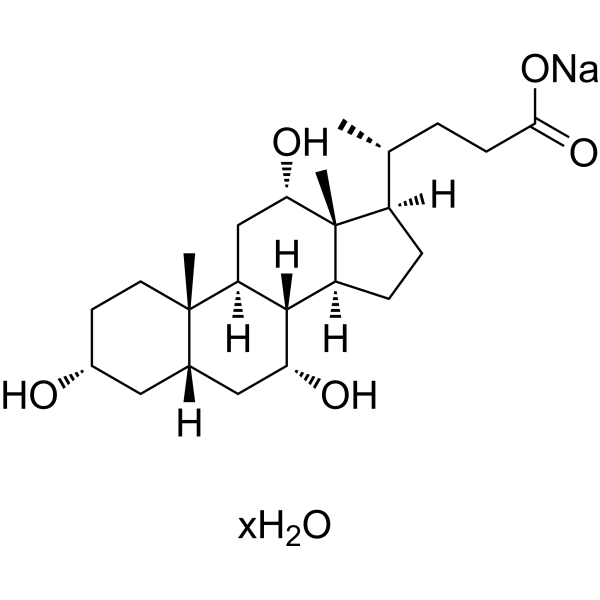
-
- HY-B0467
-
|
Amoxycillin sodium
|
Bacterial
Antibiotic
|
Infection
|
|
Amoxicillin (Amoxycillin) sodium is an antibiotic with good oral absorption and broad spectrum antimicrobial activity. Amoxicillin sodium inhibits the biosynthesis of polypeptides in the cell wall, thereby inhibiting cell growth .
|
-
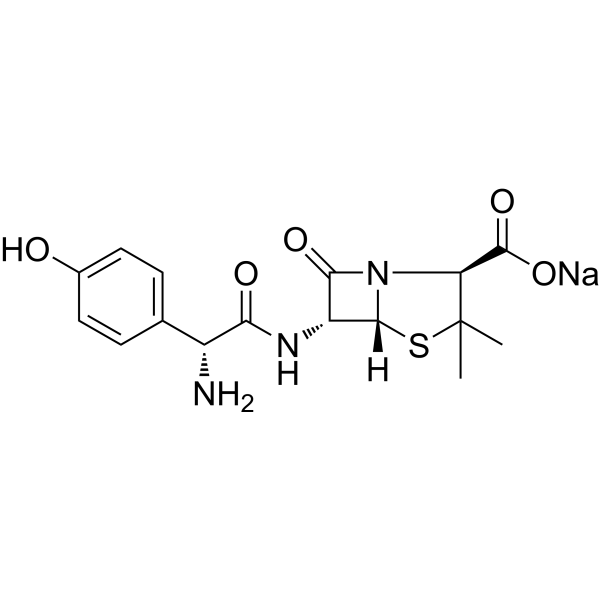
-
- HY-B0467A
-
Amoxicillin
Maximum Cited Publications
13 Publications Verification
Amoxycillin
|
Bacterial
Antibiotic
|
Infection
Cancer
|
|
Amoxicillin (Amoxycillin) is an antibiotic with good oral absorption and broad spectrum antimicrobial activity. Amoxicillin inhibits the biosynthesis of polypeptides in the cell wall, thereby inhibiting cell growth .
|
-
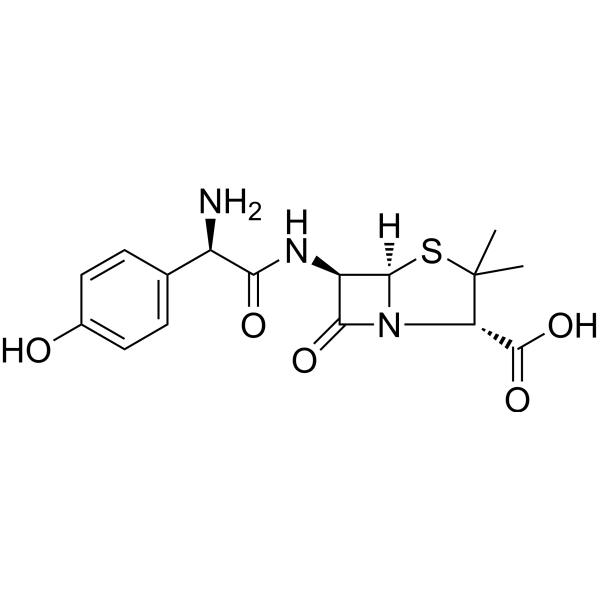
-
- HY-B0544
-
|
Sodium Picosulphate
|
Others
|
Metabolic Disease
|
|
Sodium Picosulfate (Sodium Picosulphate) is a contact irritant laxative with oral activity. Sodium Picosulfate inhibits the absorption of water and electrolytes, increasing their production. Sodium Picosulfate can be used in colonoscopy applications .
|
-

-
- HY-114299
-
|
SNAC
|
Others
|
Others
|
|
Salcaprozate sodium (SNAC), an oral absorption promoter, and has the potential as a delivery agent for oral forms of heparin and insulin. Salcaprozate sodium could increase passive transcellular permeation across small intestinal epithelia based on increased lipophilicity arising from non-covalent macromolecule complexation .
|
-
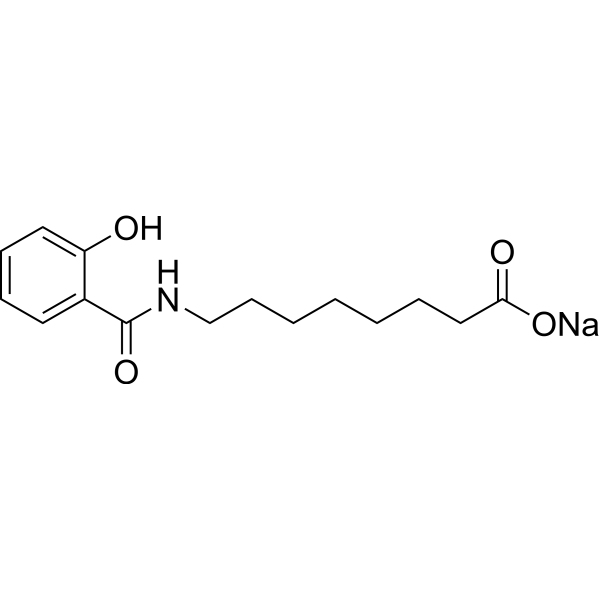
-
- HY-B0467B
-
|
Amoxycillin trihydrate
|
Bacterial
Antibiotic
|
Infection
|
|
Amoxicillin (Amoxycillin) trihydrateis an antibiotic with good oral absorption and broad spectrum antimicrobial activity. Amoxicillin trihydrateis inhibits the biosynthesis of polypeptides in the cell wall, thereby inhibiting cell growth .
|
-
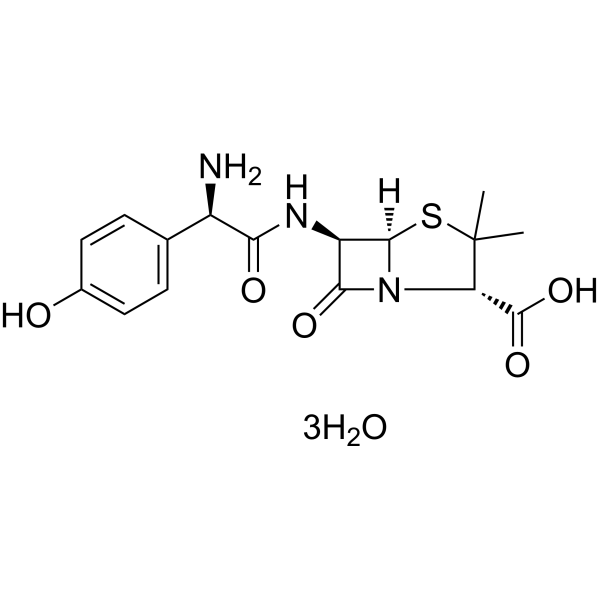
-
- HY-B0467C
-
|
Amoxycillin arginine
|
Antibiotic
Bacterial
|
Infection
|
|
Amoxicillin (Amoxycillin) arginine is an antibiotic with good oral absorption and broad spectrum antimicrobial activity. Amoxicillin arginine inhibits the biosynthesis of polypeptides in the cell wall, thereby inhibiting cell growth .
|
-
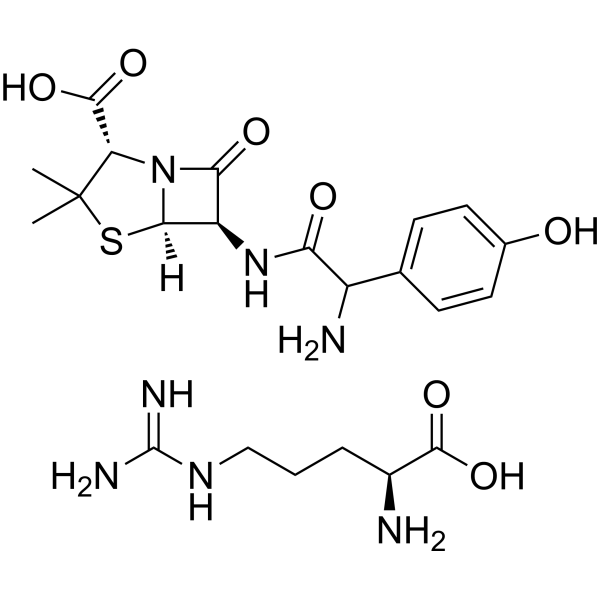
-
- HY-106902
-
|
|
Acyltransferase
|
Cardiovascular Disease
|
|
F-1394 is an orally active acyl-CoA:cholesterol acyltransferase (ACAT) inhibitor that inhibits dietary cholesterol absorption in mice. F-1394 can be used in cardiovascular disease research .
|
-
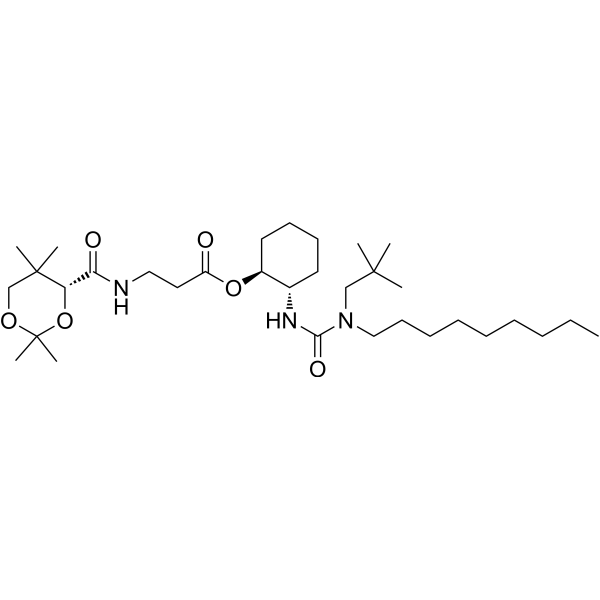
-
- HY-109519
-
|
|
Others
|
Others
|
|
Simethicone is an orally active defoamer. Simethicone reduces the surface tension of air bubbles in the gastrointestinal tract, causing them to be expelled by vomiting, exhalation or absorption into the bloodstream. Simethicone has potential applications in flatulence and colic .
|
-

-
- HY-119220
-
|
JTT-130
|
Microsomal Triglyceride Transfer Protein (MTP)
|
Metabolic Disease
|
|
Granotapide (JTT-130) is an orally active microsomal triglyceride transfer protein (MTP) inhibitor. Granotapide reduces absorption of cholesterol and triglycerides through inhibition of MTP. Granotapide can be used for the research of dyslipidemia .
|
-
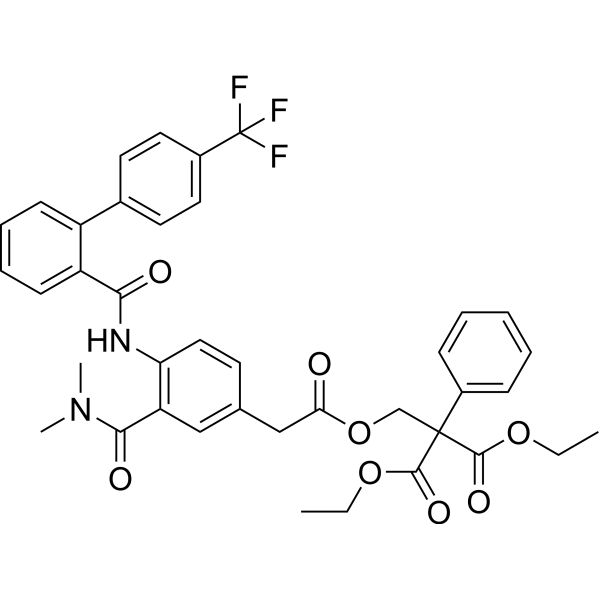
-
- HY-N3197
-
|
(+)-Neostenine
|
P-glycoprotein
|
Cancer
|
|
Neostenine is a stenine-type Stemona alkaloid, with antitussive activity. Neostenine is also a substrate of P-glycoprotein with high absorptive permeability in Caco-2 monolayer model. Neostenine also shows oral activity for intestinal application .
|
-
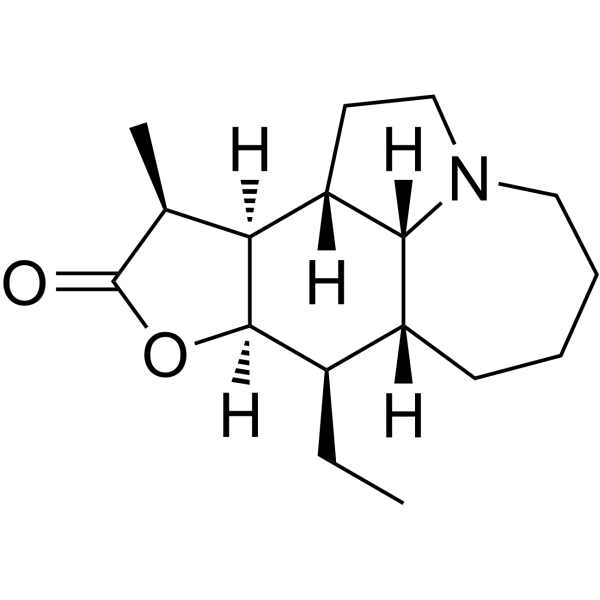
-
- HY-113478
-
|
Isoursodeoxycholic acid
|
Others
|
Metabolic Disease
|
|
3β-Ursodeoxycholic acid (Isoursodeoxycholic acid) is a bile acid. 3β-Ursodeoxycholic acid shows good tolerance and well intestinal absorption by oral adminstation. 3β-Ursodeoxycholic acid can be isomerized by intestinal and hepatic enzymes to yield UDCA .
|
-

-
- HY-N0324R
-
|
|
Endogenous Metabolite
|
Metabolic Disease
|
|
Cholic acid (Standard) is the analytical standard of Cholic acid. This product is intended for research and analytical applications. Cholic acid is a major primary bile acid produced in the liver and usually conjugated with glycine or taurine. It facilitates fat absorption and cholesterol excretion. Cholic acid is orally active .
|
-
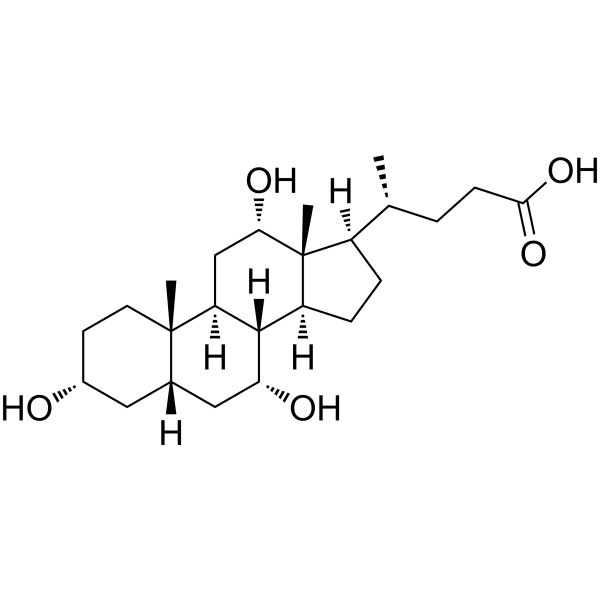
-
- HY-108288
-
|
CP 47904
|
Beta-lactamase
Antibiotic
Bacterial
|
Infection
|
|
Sulbactam pivoxil is a proagent of sulbactam. Sulbactam is a β-lactamase inhibitor which poorly adsorbed from gastrointestinal tract. Sulbactam pivoxil has a better absorption than the parent agent and provides high serum levels after oral administration .
|
-
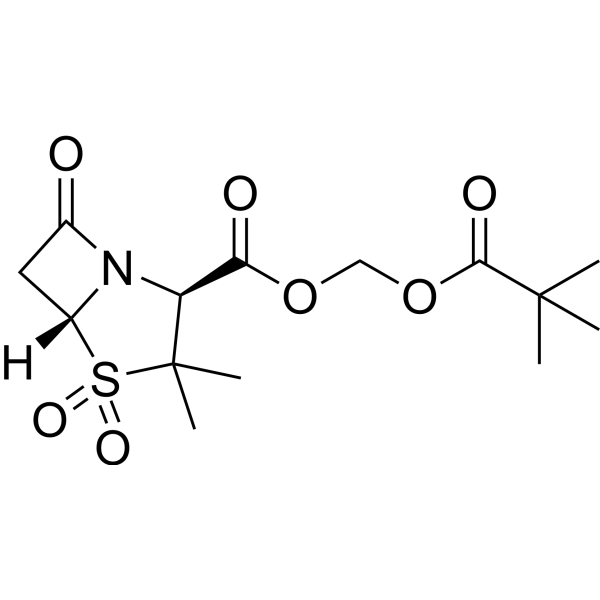
-
- HY-131165
-
|
|
Antibiotic
Bacterial
|
Infection
|
|
Amoxicillin (trihydrate) mixture with potassium clavulanate (4:1) an antibiotic with good oral absorption and broad spectrum antimicrobial activity. Amoxicillin (trihydrate) mixture with potassium clavulanate (4:1) inhibits the biosynthesis of polypeptides in the cell wall, thereby inhibiting cell growth .
|
-
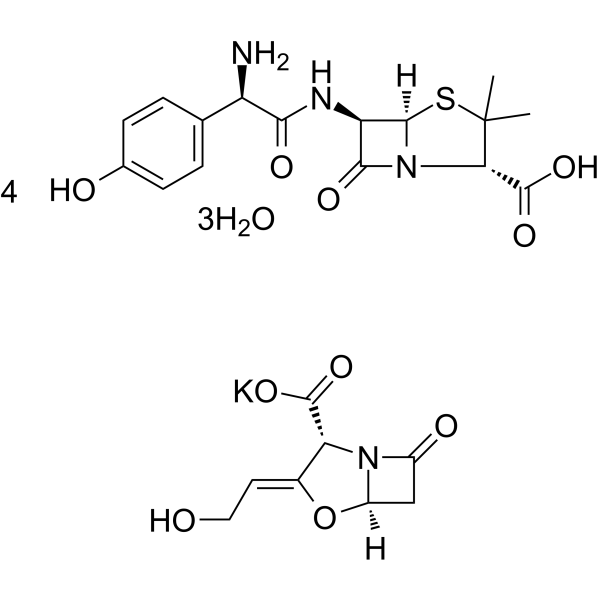
-
- HY-122487
-
|
BHV-4157
|
Others
|
Neurological Disease
|
|
Troriluzole, a third-generation, tripeptide proagent of Riluzole (HY-B0211), is an orally active glutamate modulator. Troriluzole reduces synaptic glutamate level and increases the synaptic glutamate absorption. Troriluzole has the potential for Alzheimer disease and generalized anxiety disorder (GAD) .
|
-
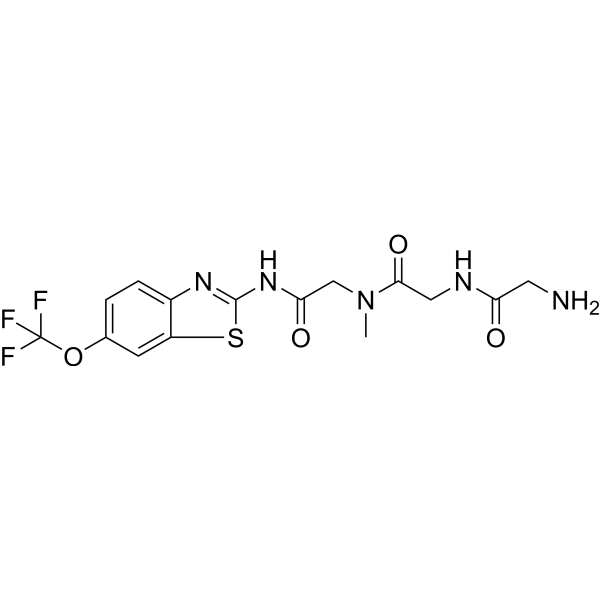
-
- HY-100500
-
|
KBT 1585 hydrochloride
|
Penicillin-binding protein (PBP)
Bacterial
|
Cancer
|
|
Lenampicillin hydrochloride (KBT 1585 hydrochloride) is an orally active proagent of Ampicillin and is an effective beta-lactam antibacterial agent that inhibits bacterial penicillin-binding proteins (transpeptidase). Lenampicillin hydrochloride has improved absorption and decreased side effects compares to Ampicillin and is applied in the investigation of the suppurative skin and soft tissue infection .
|
-
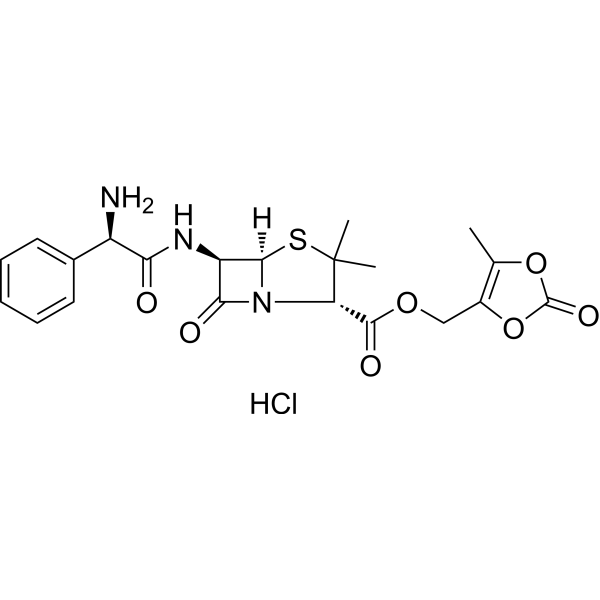
-
- HY-150555
-
|
|
Potassium Channel
|
Others
|
|
P-CAB agent 1 (compound B19) is a highly potent potassium-competitive acid blocker agent with an IC50 value of 60.50 nM for H +/K +-ATPase. P-CAB agent 1 has acceptable oral absorption in rats. P-CAB agent 1 can be used for researching acid-related disorders (ARDs) .
|
-
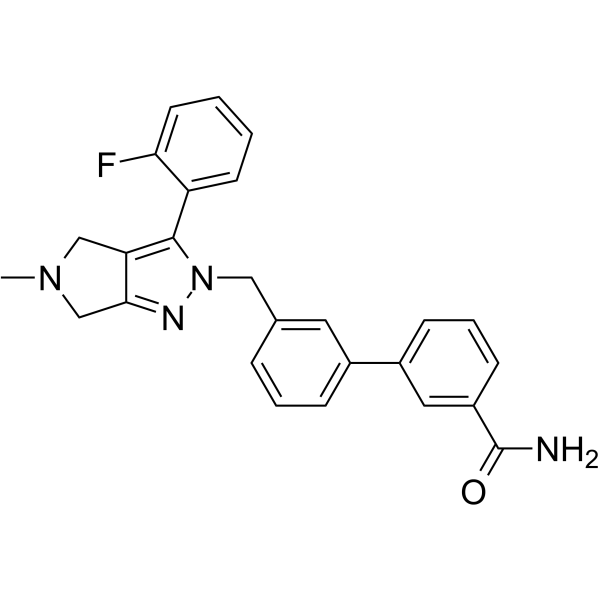
-
- HY-113133
-
|
|
Glucosidase
|
Infection
Metabolic Disease
Inflammation/Immunology
|
|
Kojibiose, an orally active prebiotic disaccharide, can specifically inhibit the activity of α-glucosidase I. kojibiose is a proliferation factor for Bifidobacterium, lactic acid bacteria, and eubacteria. kojibiose is a low-calorie sweetener capable of increasing the absorption of iron. Kojibiose exhibits antitoxic activity. Kojibiose reduces hepatic expression of inflammatory markers in vivo .
|
-

-
- HY-B0558
-
|
|
p38 MAPK
|
Neurological Disease
Endocrinology
|
|
Carbimazole is an orally active antithyroid agent which rapidly converts to Methimazole after absorption and prevents thyroid peroxidase enzyme from iodinating and coupling the tyrosine residues on thyroglobulin, hence reducing the production of thyroxine. Carbimazole also displays anti-inflammatory and neuronal-protective activities, suggesting its application for hyperthyroidism and neurological research .
|
-
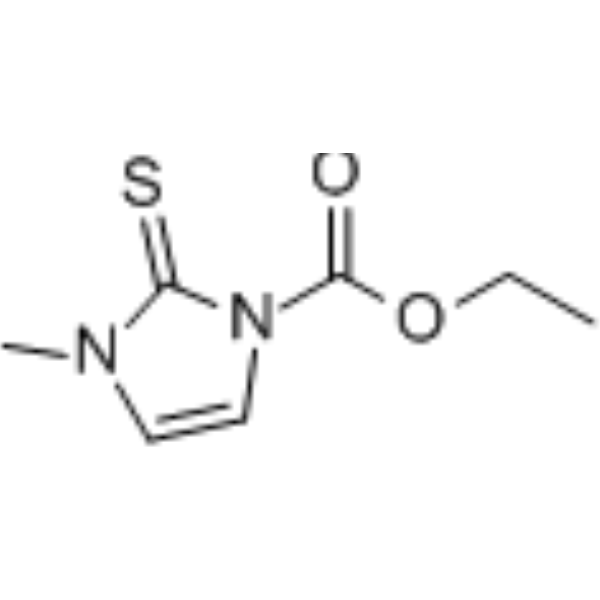
-
- HY-163380
-
|
|
Carbonic Anhydrase
|
Neurological Disease
|
|
CA/MAO-B-IN-1 (Compound 78) is a dual inhibitor for human brain carbonic anhydrases (CA) and Monoamine Oxidase-B (MAO-B), with IC50s of 8.8 and 7.0 nM, respectively. CA/MAO-B-IN-1 reveals a human oral absorption of 71.9% through in silico prediction .
|
-
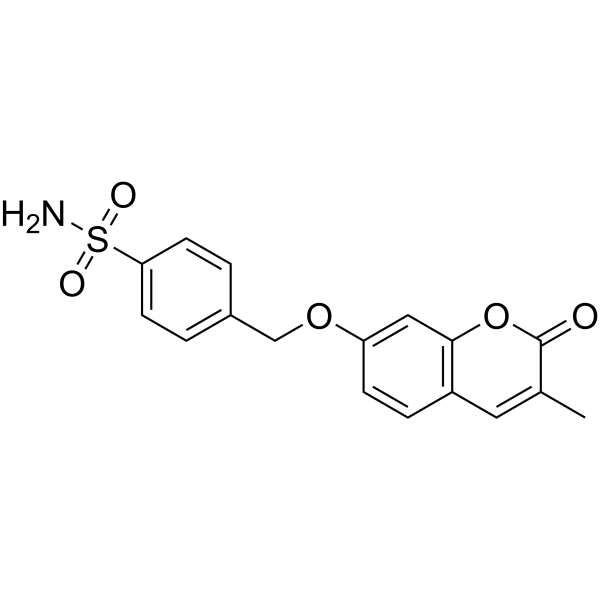
-
- HY-143294
-
|
|
Epoxide Hydrolase
|
Cardiovascular Disease
|
|
sEH inhibitor-2 (compound 5l) is an orally active (predicted percentage absorption: 71.2-88.4%) soluble epoxide hydrolase (sEH) inhibitor, with an IC50 of 0.9 nM. sEH inhibitor-2 can maintain epoxyeicosatrienoic acids (EETs) serum level in high concentrations. sEH inhibitor-2 can be used in study of cardiovascular protection .
|
-
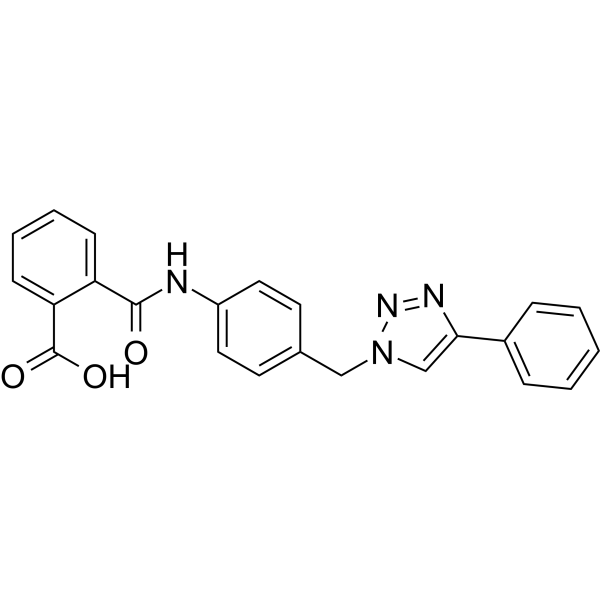
-
- HY-150080
-
|
BMS-986180
|
HIV
HIV Integrase
|
Infection
|
|
GSK3739936 (BMS-986180) is a potent HIV-1 allosteric integrase inhibitor with an IC50 value of 11.1 nM and an EC50 value of 1.7 nM. GSK3739936 is also a weak CYP inhibitor (IC50>24.3 μM). GSK3739936 shows favorable pharmacokinetic property in preclinical species with rapid absorption, low to moderate clearance and excellent oral bioavailability .
|
-

-
- HY-B0558R
-
|
|
p38 MAPK
|
Neurological Disease
Endocrinology
|
|
Carbimazole (Standard) is the analytical standard of Carbimazole. This product is intended for research and analytical applications. Carbimazole is an orally active antithyroid agent which rapidly converts to Methimazole after absorption and prevents thyroid peroxidase enzyme from iodinating and coupling the tyrosine residues on thyroglobulin, hence reducing the production of thyroxine. Carbimazole also displays anti-inflammatory and neuronal-protective activities, suggesting its application for hyperthyroidism and neurological research .
|
-
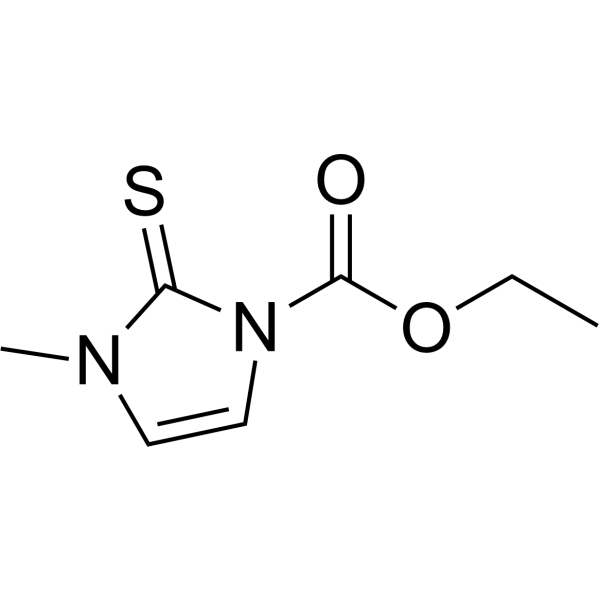
-
- HY-149276
-
|
|
GLUT
|
Metabolic Disease
|
|
SLC26A3-IN-2 is an orally active inhibitor of anion exchanger protein SLC26A3 (IC50=360 nM). SLC26A3 belongs to solute carrier (SLC) proteins, and the SLC26 family. SLC26 family has broad anion specificity for chloride, bicarbonate, sulfate and oxalate. SLC26A3 down-regulates in adenoma, DRA, involves in in intestinal absorption of chloride and oxalate. The loss of SLC26A3 function mutations is associated with chloride-losing diarrhea .
|
-

-
- HY-W115716
-
|
|
Biochemical Assay Reagents
|
Others
|
|
Sorbitan trioleate is an orally active nonionic surfactant with low toxicity (LD≥200 mg/kg). Sorbitan trioleate can be used as an excipient, such as surfactant, emulsifier, lubricant, wetting agent, dispersant, thickener, defoamer. Pharmaceutical excipients, or pharmaceutical auxiliaries, refer to other chemical substances used in the pharmaceutical process other than pharmaceutical ingredients. Pharmaceutical excipients generally refer to inactive ingredients in pharmaceutical preparations, which can improve the stability, solubility and processability of pharmaceutical preparations. Pharmaceutical excipients also affect the absorption, distribution, metabolism, and elimination (ADME) processes of co-administered drugs .
|
-

-
- HY-N0378
-
|
Mannitol; Mannite
|
Endogenous Metabolite
Apoptosis
Adrenergic Receptor
PGC-1α
PKA
|
Metabolic Disease
Cancer
|
|
D-Mannitol (Mannitol) is an oral, resistant sugar widely used in the food and pharmaceutical industries to promote the absorption and retention of calcium and magnesium through cecal fermentation, while acting as a osmotic diuretic to reduce tissue edema. D-Mannitol can enhance brown fat formation, improve insulin effect, reduce blood sugar levels, And through the start the β3-adrenergic receptor (β3-AR), PGC1α and PKA induced by means of white fat cells into brown fat cells .
|
-

-
-
HY-L137
-
|
|
35 Compounds compounds
|
|
Targeted protein degradation(TPD) is a novel and promising approach to new drug discovery and development. It shows great potential for treating diseases with “undruggable” pathogenic protein targets and for overcoming drug resistance. Molecular glues and PROTACs are both targeted protein degraders that have attracted the most attention.
Molecular glues are small molecular degraders that mainly induce novel interaction between an E3 ligase and a target protein to form a ternary complex, leading to protein ubiquitination and subsequent proteasome degradation. Compared with PROTACs, molecular glues generally possess more favorable drug-like properties, such as lower MW, higher cell permeability, and better oral absorption. Molecular glues are emerging as a promising new therapeutic strategy.
MCE supplies a unique collection of 35 molecular glues which target various proteins. MCE Molecular Glue Compound Library is a useful tool to conduct scientific research and disease mechanism study.
|
| Cat. No. |
Product Name |
Category |
Target |
Chemical Structure |
| Cat. No. |
Product Name |
Chemical Structure |
-
- HY-B0467S
-
|
|
|
Amoxicillin-d4 is a deuterium labeled Amoxicillin. Amoxicillin is an antibiotic with good oral absorption and broad spectrum antimicrobial activity[1][2].
|
-

-
- HY-B0467AS
-
|
|
|
Amoxicillin- 13C6 is the 13C6 labeled Amoxicillin. Amoxicillin is an antibiotic with good oral absorption and broad spectrum antimicrobial activity.
|
-

| Cat. No. |
Product Name |
|
Classification |
-
- HY-10533
-
|
5-Ethynyluracil; GW776C85
|
|
Alkynes
|
|
Eniluracil (5-Ethynyluracil) is an orally active dihydropyrimidine dehydrogenase (DPD) inhibitor. Eniluracil irreversibly inhibits DPD, increases the oral bioavailability of 5-fluorouracil to 100%, and facilitates the uniform absorption and toxicity of 5-fluorouracil. Eniluracil can be used in cancer research of combination with fluoropyrimidines (including 5-fluorouracil) . Eniluracil is a click chemistry reagent, it contains an Alkyne group and can undergo copper-catalyzed azide-alkyne cycloaddition (CuAAc) with molecules containing Azide groups.
|
Your information is safe with us. * Required Fields.
Inquiry Information
- Product Name:
- Cat. No.:
- Quantity:
- MCE Japan Authorized Agent:












































